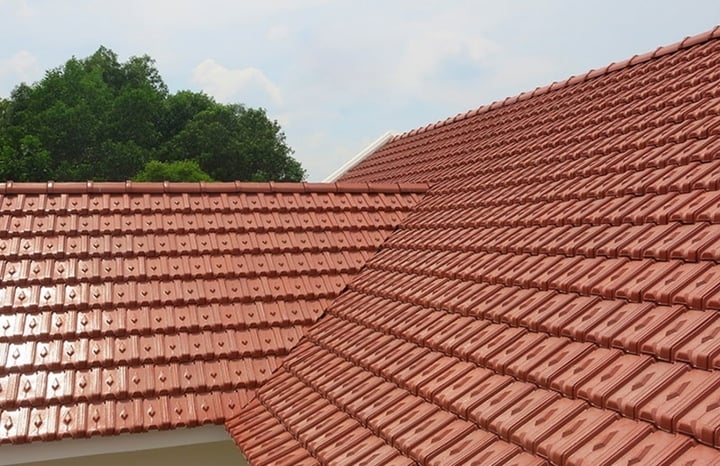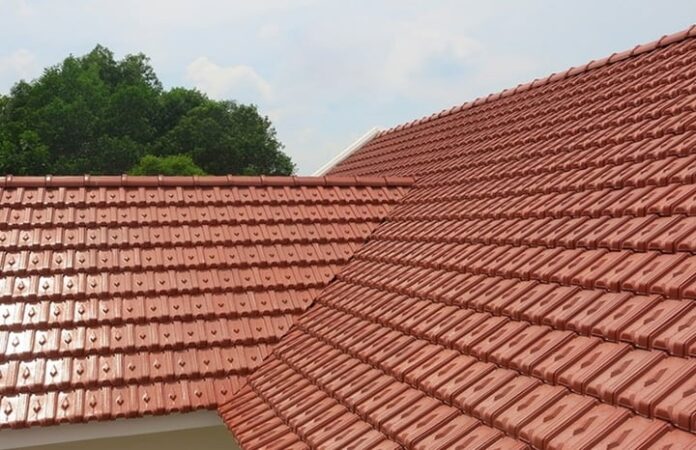Tile Roofing
Tile roofing offers a cost-effective option for homeowners. Beyond tiles, this method also employs wooden or bamboo battens, purlins, and rafters. Should these materials be inaccessible, steel or box iron can be used as substitutes.
The tiles themselves are typically made of terracotta, ceramic, or stone, as concrete tiles tend to absorb and retain heat. One advantage of tile roofing is its relatively lightweight construction, allowing for easier repairs and replacements compared to fixed concrete alternatives.
However, tile roofing is susceptible to gaps during installation, which can allow rain and dust to enter the house. It is also less wind-resistant and may be susceptible to storm damage.

Tile roofing is a cost-effective option. (Photo: Construction Nam Phong)
Concrete Roofing with Tile Overlay
Concrete roofing with a tile overlay boasts superior aesthetics and durability. This method allows for intricate detailing and complex designs, all while providing excellent insulation against the heat. The double-layered construction also contributes to its wind resistance, making it an ideal choice for Vietnam’s tropical climate.
However, the installation process is time-consuming and costly. Repairs can be challenging due to the fixed nature of the tiles, and the added weight of the tiles can be a concern. Additionally, the different expansion rates of adhesives and tiles may cause the tiles to detach over time.
Tile Roofing vs. Concrete Roofing with Tile Overlay: Which is Better?
Both methods have their advantages and disadvantages, so the choice depends on the specific needs and preferences of the homeowner, as well as the architectural style of the house.
For traditional homes with wooden rafters, tile roofing is a better fit, complementing the classic aesthetic while keeping the interior cool. On the other hand, for homes with concrete sloping roofs, a tile overlay is often chosen for its decorative appeal, usually applied after the ceiling is already in place.
Consulting with an architect before making a decision is always advisable to ensure the chosen roofing method aligns with the home’s design and the owner’s requirements.
















